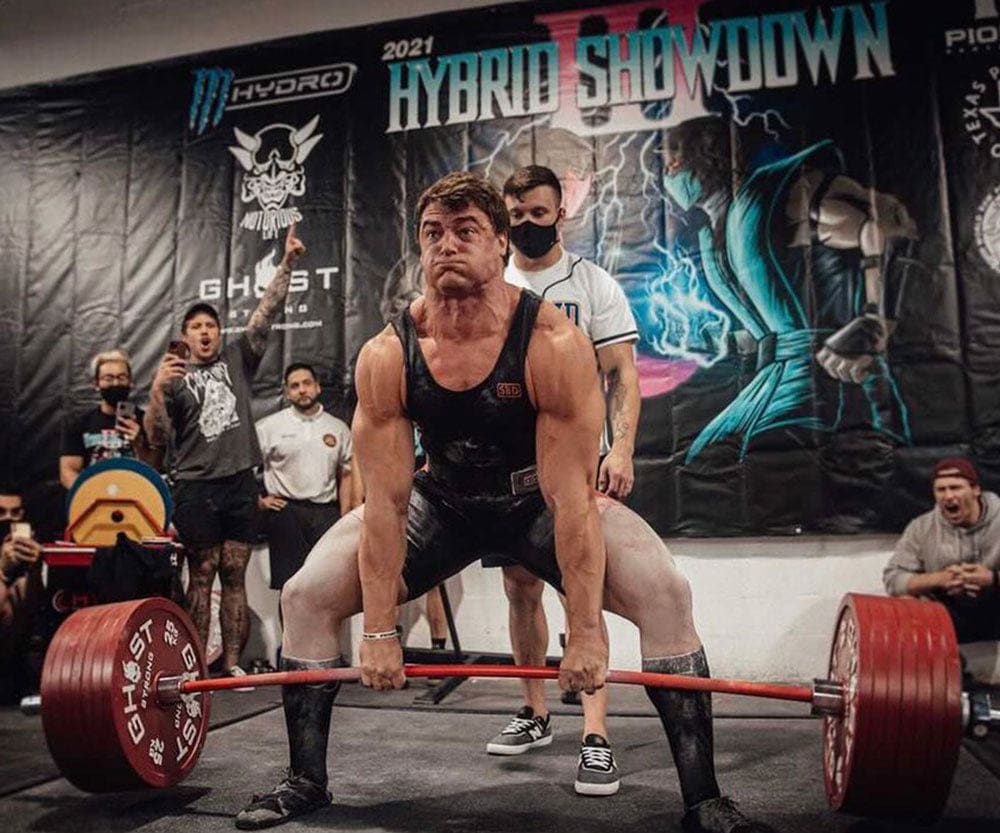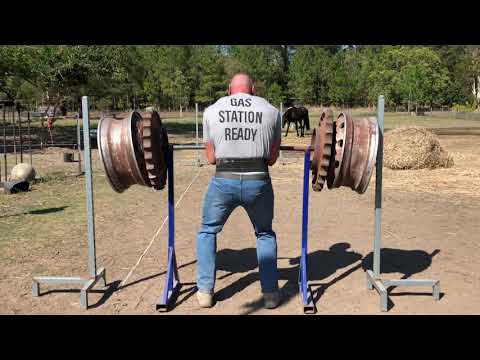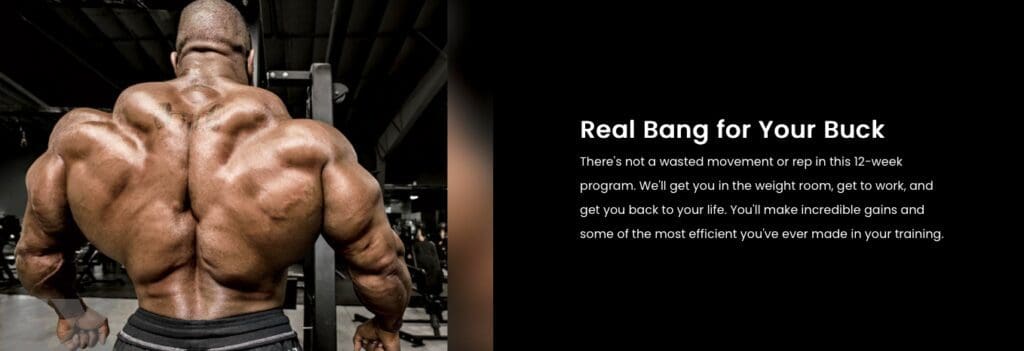Shane Hunt—Strength Strategies
by: Josh Bryant

Beginners build strength and muscle at a faster rate than experienced lifters, aka, newbie gains.
Shane Hunt, while just 24 years of age, ain’t no newbie; he has been competing in powerlifting for 10 years. In February, at the WRPF Ghost Clash, weighing 268, Shane totaled 2160 raw, with a 755 squat, 501 bench and 903 deadlift.
Shane PRd in every metric and with Shane’s work ethic, focus, and being healthy—
I am predicting all-time world records dropping like acid tabs at a Timothy Leary lecture.
Let’s look at five strategies that helped Shane, a world-class lifter, improve in every metric over the last six months that we worked together.
Walking Away
“The hardest hits you see on the football field are in Alumni games and the first practice in pads,” explained football JUCO coaching legend, Barney Eames–the man that put national football powerhouse Allan Hancock on the map. Eames explained, “When players are freshest, they are most excited and want to hit someone.”
Santa Barbara coaching legend, Fred Warracker, said before our first league game, “I may not have the fastest horse in the race, but I will have the freshest.” That year, us fresh horses not only went on to win every league game, but no one scored on us in the entire Channel League!
These two instances had a profound effect on me.
I make my athletes work harder than an ugly stripper, but I always keep in mind the stimulus to fatigue ratio, or how much fatigue does a technique, session, week, block of training produce. And is the training stimulus and adaptation worth the cost?
Shane worked his ass off toward his goals with Carlos Hathcock-like precision.
Before meet prep, Shane’s off-season included strongman work, bodybuilding work and core lift variations. Hypertrophy training was high on localized fatigue but low systemically, strongman was a new enough stimulus where it provided a host of benefits without training with extreme volume or intensity.
As Shane’s meet approached, the volume was relatively high albeit submaximal in competition lift and high-volume accessory work kept fatigue localized to the muscular system.
Bottom line is, Shane walked away from his training sessions excited and working hard but leaving some in the tank. Walking away knowing you could do more is exciting and builds psychological momentum, I learned this from the great Ed Coan!
I had the freshest horse in the race and, with Shane, also the fastest.
Application Point
Anything you do in the training, look at how much fatigue it imposes on muscular tissue, joints, systemically and what positive or negative adaptations result.
Is the tradeoff worth it?

Try Powerbuilding in your off-season!
Priming the CNS
Maximum Recoverable Volume (MRV) is how much volume in training you can recover from and positively direct adaptations. Just like hillbillies that test the drink limit at the Embassy Suites complimentary cocktail hour, lifters often test their volume limits when introducing a new stimulus. Smart lifters look at minimum effective dosage to direct the training effect.
Shane had not been jumping.
I decided to program jump training into to his deadlift sessions. For example, six weeks out, Shane did Safety Bar Free Squats with 440 for a single, then immediately did a vertical jump after. Then, Shane rested 60 seconds and repeated this sequence six times before working up to a 750 conventional deadlift single.
The jump training primed Shane’s central nervous system to deadlift more explosively. This equaled more productive deadlift sessions, greater gains over the prep and ultimately massive squat and deadlift PRs meet day.
The NSCA textbook advises over 100 jumps per session, had Shane partaken in that preposterous brouhaha he would have been systemically fatigued. A little bit went a long way! Six jumps changed the game; why work overtime when you can get rich working part time?
Application Point
If you meet the following criteria
- <20 percent bodyfat
- Injury-free hips, knees, and lower back
- Can raw squat 1.5 times your bodyweight and/or deadlift 1.75 your bodyweight
- Under 40
Try 5-10 box jumps or vertical jumps before one of your squat or deadlift session and see how the jumps prime your CNS.
Jump Training for Strength Athletes
Strongman Off-Season
As you prep for a meet, the sole objective is: Prepare to demonstrate your greatest strength meet day. This requires specific training.
Phase Potentiation is defined as the strategic sequencing of programming phases to increase the potential of subsequent phases and increase long term adaptive potential. In other words, current and future phases are built on previous ones.
Remember, the bigger the base the higher the strength pyramid can rise as espoused by Bill Kazmaier.
A powerlifting meet prep cycle is potentiated with off-season training, which helps protect a lifter from fruitless muscular fatigue, mental burnout, overtraining, overuse injuries and serious acute injuries. The right off-season strategy helps you add hypertrophy, strengthen weak points, increase strength potential, and provide a beneficial novelty stimulus.
Strongman events are worth their weight in gold in the powerlifting off-season. As we pragmatically applied strongman events to Shane’s training, training was fun and the process built work capacity, explosive strength, grip strength, a powerful posterior chain, quad strength/knee health, mental toughness and an overall resilience to injuries. The strongman events that helped Shane the most were backwards sled drags, yoke and farmers walk.
Application Point: Over time, the nervous system and muscles become less sensitive to a given stimulus, introducing variation prevents adaptive resistance, injuries and provides a fresh mental stimulus. Variation traditionally comes in the form of variations of the core lifts; for example, high bar squats verses low bar squats. Shane, along with many of my top lifters, know that one of the best modalities of directed variation for off-season powerlifting is strongman training! Strongman routinely deadlift 900+ with technique that looks akin to a beginning CrossFit barbell class. There is good, better, and best and it when it comes to building raw bear-wrassling strength, nothing beats strongman and it quickly converts to powerlifting strength.
Eat Big, Total Big
Your nutrition is on point. Supplements are dialed in. You are sleeping like a baby. No more fast women, whiskey and cigars; you are in the iron priesthood and hitting PRs regularly. Momentum is working for you, the band of strength is playing like a harmonious strength symphony and you are the conductor! This symphony will quickly sound like a shit show karaoke at a kick-n-stab stevedore bar if you start cutting weight too fast.
Shane slowly gained weight up until the meet.
Mass moves mass and having Shane’s lifestyle dialed in, this added positive momentum and the snowball of strength gains was unstoppable.
Application Point
You got into powerlifting to get as strong as possible, it ain’t going to happen on skinless poultry and wild rice. Weight cutting is permissible for serious records and titles. Now imagine going into a meet at your training weight (and even eating huge the week of), you’ll be confident and ready to set massive PRs.
Undulating Weeks
Technically simple “dumb lifts”, like a conventional deadlift, do not have to be trained as frequently as neurologically complex “smart lifts” like the snatch. Additionally, optimal training frequency is influenced by genetics, training history, strength levels and a host of other individual differences.
I use a VAST variety of training frequencies with clients.
Here is what I have found building on lessons from my mentor, Dr. Fred Hatfield. Lifters with primarily fast-twitch muscle fibers do better with lower training frequencies contrasted to lifters with more slow-twitch muscle fibers that flourish with higher training frequencies.
Shane is a neurological efficient fast-twitch machine and because of Shane’s efficient tissue, I’m careful balancing stimulus, fatigue, recovery and adaptation.
Shane deadlifts sumo, which requires the highest technical mastery in powerlifting.
Formerly, Shane would go heavy on both squats and deadlifts weekly. This initially worked well but led to overwhelming levels of fatigue so Shane’s best was left in the gym . The surface level solution is squat heavy one week and deadlift heavy the next in an undulating style, this works well for many fast-twitch dominant (fast gainer lifters). Recovery is on point because of the intermittent high intensity stimulus, mentally it does great for laser-focused, psychologically strong lifters. Psychology always trumps physiology.
We adapted this specifically for Shane.
For example, one week Shane would do heavy squats and medium sumo deadlifts, focusing on short rest breaks to stimulate dormant fibers and preserve work capacity. Over time, this worked but then the fatigue started to really outweigh the stimulus, so I made the audible call of squatting heavy one week, and moderately heavy the next week in conventional deadlift. BOOM! This led to Shane hitting an amazing 903 deadlift PR. It also gave us the option of going conventional at the meet in a shit hit the fan scenario!
Application Point
Fast gainers need less volume and frequency than slow gainers; as a slow gainer, your ace card is your aptitude to train more often and with greater volume and intensity. Remember The Law of Individual Differences: We all have different abilities, bodies, and weaknesses, and we all respond differently (to a degree) to any given system of training. These differences should be taken into consideration when designing your training program.
Final Thoughts
Recall, the stronger a person is the harder to get stronger!
As I consistently remind my readers, look to Bruce Lee when reading this and applying it to your situation, “Absorb what is useful, reject what is useless, add what is essentially your own.”
Tactical Powerlifting Now Available!

